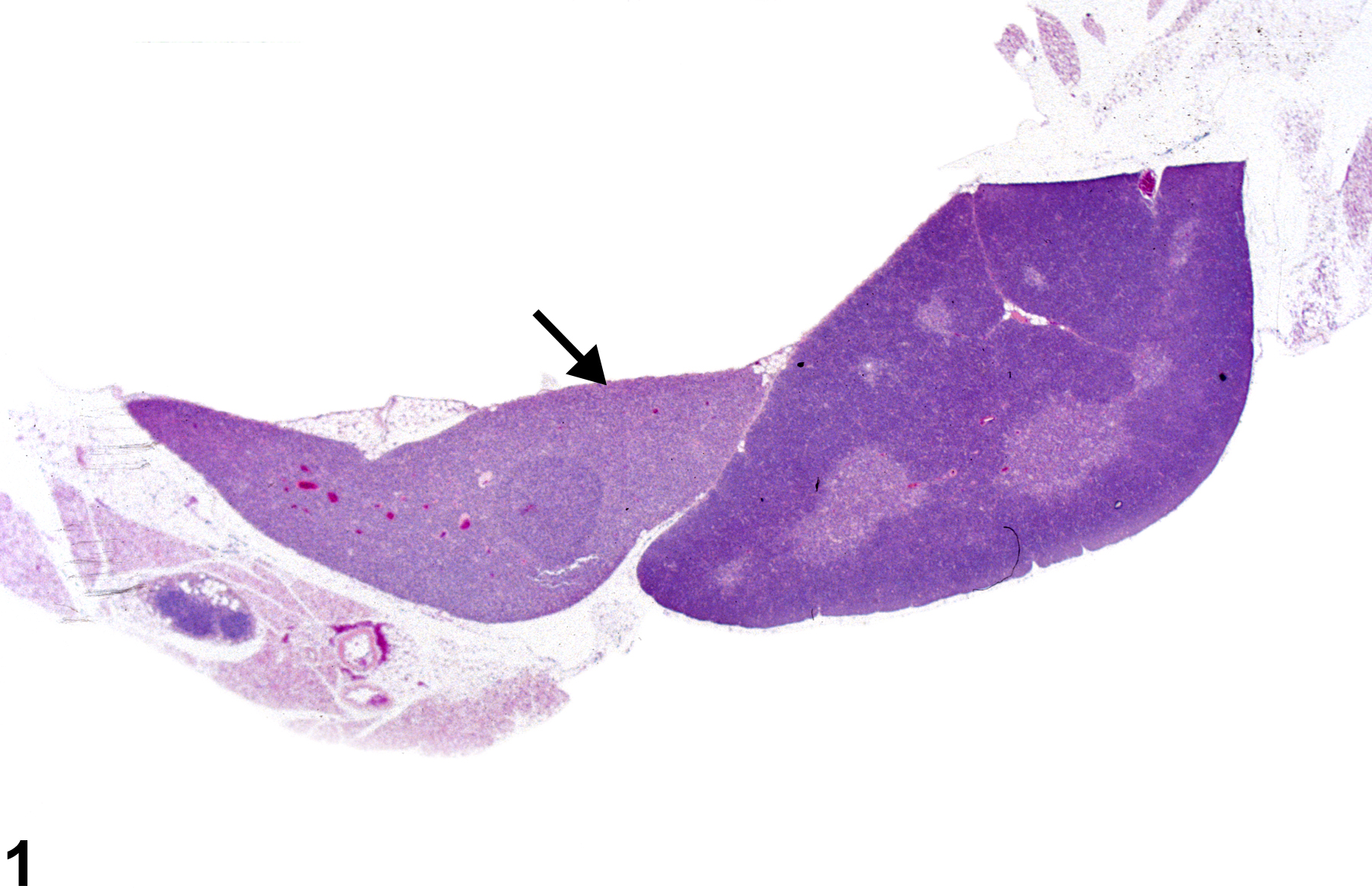Immune System
Thymus - Atypical Hyperplasia, Lymphocyte
Narrative
Dunnick JK, Hardisty JF, Herbert RA, Seely JC, Furedi-Machacek EM, Foley JF, Lacks GD, Stasiewicz S, French JE. 1997. Phenolphthalein induces thymic lymphomas accompanied by loss of the p53 wild type allele in heterozygous p53-deficient (+/-) mice. Toxicol Pathol 25:533-540.
Abstract: https://www.ncbi.nlm.nih.gov/pubmed/9437796National Toxicology Program. 2007. NTP GMM-12. Toxicology and Carcinogenesis Study of Phenolphthalein (CAS No. 77-09-8) in Genetically Modified Haploinsufficient p16Ink4a/p19Arf Mice (Feed Study). NTP, Research Triangle Park, NC.
Abstract: https://ntp.niehs.nih.gov/go/28495Pearse G. 2006. Histopathology of the thymus. Toxicol Pathol 34:515-547.
Full Text: http://tpx.sagepub.com/content/34/5/515.longWard JM, Mann PC, Morishima H, Frith CH. 1999. Thymus, spleen, and lymph nodes. In: Pathology of the Mouse (Maronpot RR, ed). Cache River Press, Vienna, IL, 333-360.
Ward JM, Tadesse-Heath L, Perkins SN, Chattopadhyay SK, Hursting SD, Morse HC 3rd. 1999. Splenic marginal zone B-cell and thymic T-cell lymphomas in p53-deficient mice. Lab Invest 79:3-14.
Abstract: https://www.ncbi.nlm.nih.gov/pubmed/9952106
Thymus - Atypical hyperplasia, Lymphocyte in a female p53+/- (C57Bl/6) mouse from a subchronic study. When atypical lymphocyte hyperplasia is unilateral, the affected lobe (arrow) is typically smaller than the unaffected lobe.



